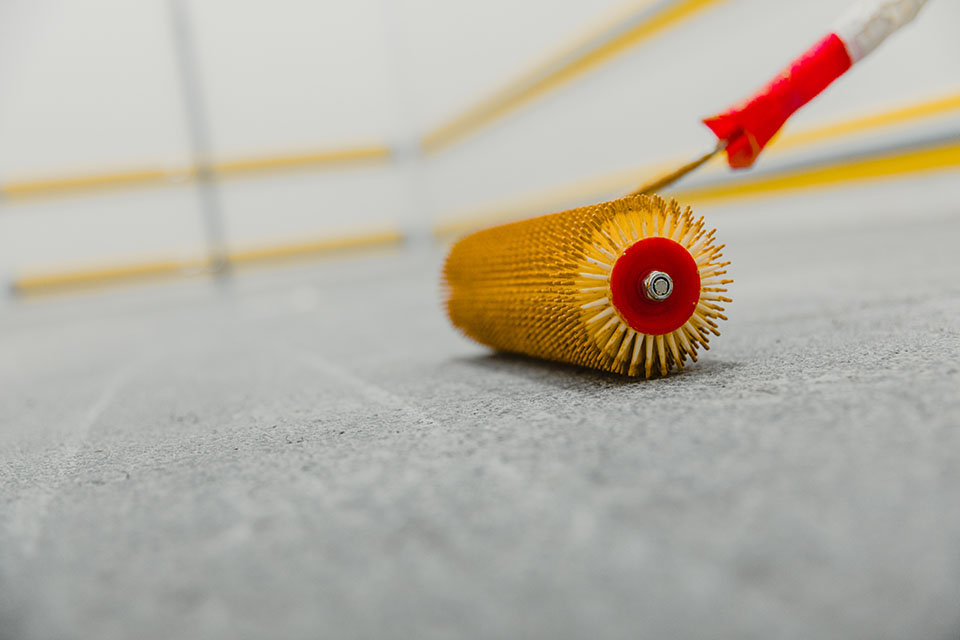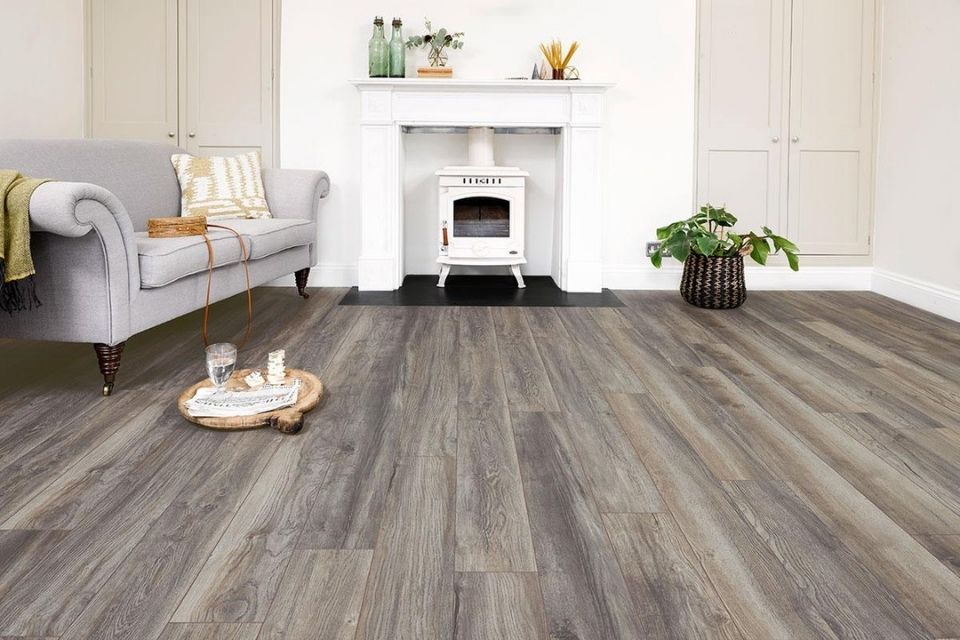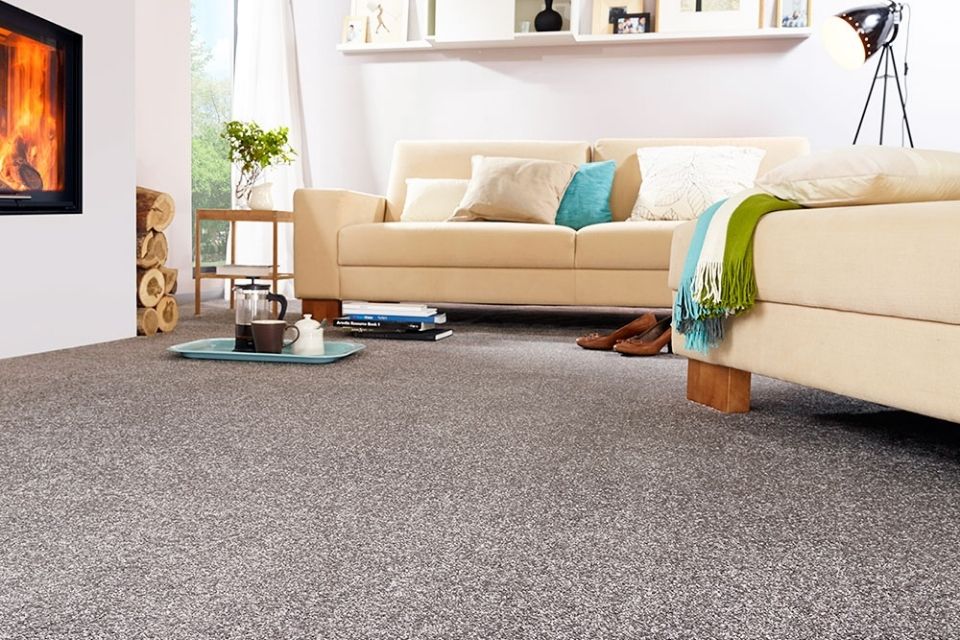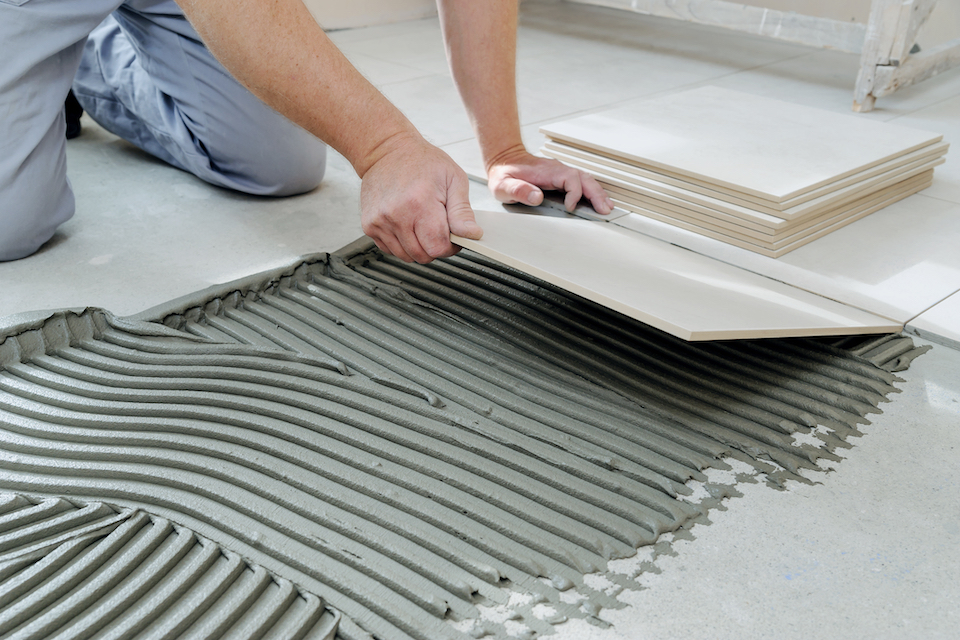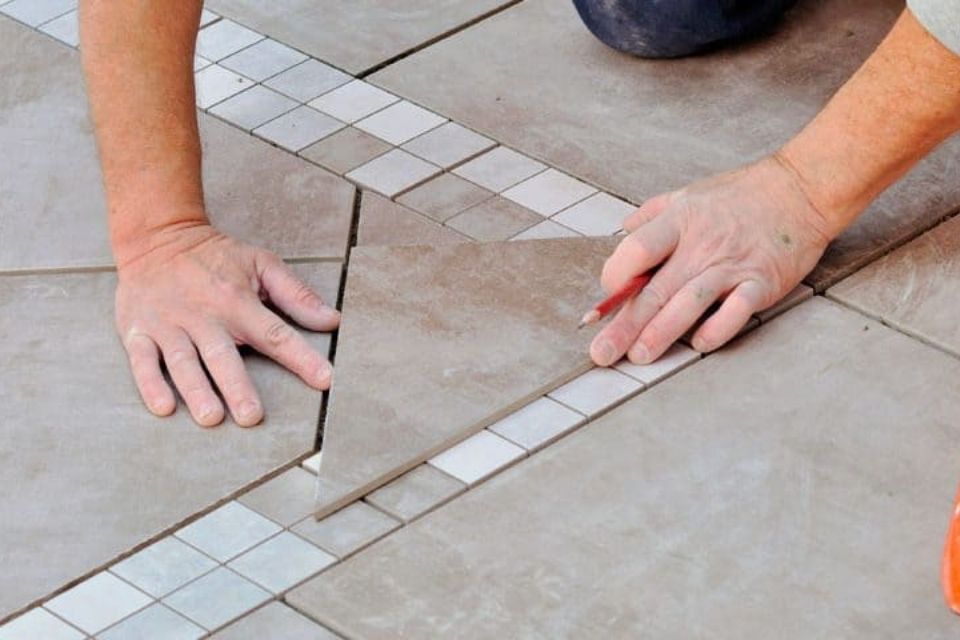How Much Does a Polished Concrete Floor Cost to Install?
So, what is the overall cost of such an installation?
The average cost of fitting a polished concrete floor is £1,500 to £1,950 for a floor space of 10m², £2,850 to £3,450 should it be 20m², £5,250 to £6,450 if it’s 40m², but you’d need to budget for about £7,800 to £9,750 for a 60m² area.
You may be interested in covering the floor space in a room or an entire house; hence the scale and associated costs of the project could vary wildly.
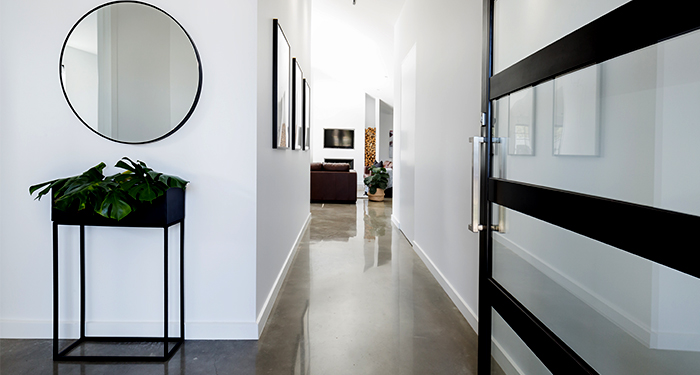
Is there anything else to consider?
The price of having polished concrete floors installed by a professional will differ based on factors such as:
- The size of the room
- Condition of the existing floor
- Size of the room
- The finish used
- Ease of access
- Number of tradespeople hired
- Where exactly in the UK you are based
Labour prices differ throughout the UK, and with labour cost being an important component of fitting a polished concrete floor, it's important to take this into consideration.
Such prices tend to be lower in the north of England, Northern Ireland, and Scotland but above the national average in the southeast of England. London is known for being particularly expensive as far as labour expenses go.
Polished Concrete Installation Prices
| Size of Area | Labour Cost | Supply Cost | Total Cost |
|---|---|---|---|
| 10m² | £300 to £900 | £1,200 to £1,500 | £1,500 to £1,950 |
| 20m² | £300 to £900 | £2,400 to £3,000 | £2,850 to £3,450 |
| 30m² | £300 to £900 | £4,800 to £6,000 | £5,250 to £6,450 |
| 40m² | £300 to £900 | £7,200 to £9,000 | £7,800 to £9,750 |
- How Much Does a Polished Concrete Floor Cost to Install?
- What are the Supply Costs of a Polished Concrete Floor Installation?
- What are the Additional Costs of Laying a Polished Concrete Floor?
- Further Cost Factors
- Tradesmen Costs for a Polished Concrete Flooring Installation
- How Long Does It Take To Lay a Polished Concrete Floor?
- Steps for Laying a Polished Concrete Floor
- Benefits of a Polished Concrete Floor
- How Much Does It Cost to Remove Polished Concrete Flooring?
- FAQs
What are the Supply Costs of a Polished Concrete Floor Installation?
The supply cost of installing a polished concrete floor excludes the labour cost, additional expenses, and any waste removal costs.
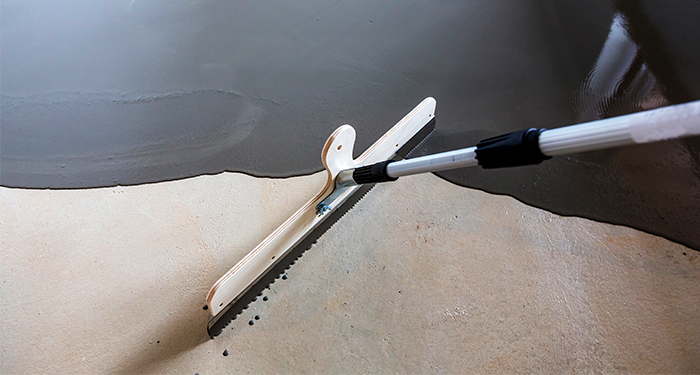
On average, the material costs of fitting a polished concrete floor is £120 to £150 per m².
Of course, polished concrete floor prices can differ significantly depending on the quality of the product, the brand, colour, and other factors.
However, the average cost per square metre given above equates to around £1,200 to £1,500 for a 10m² area, £2,400 to £3,000 for a 20m² surface area, £4,800 to £6,000 for a 40m² space, or £7,200 to £9,000 for a 60m² surface.
Pricing may be higher than more traditional flooring types such as hardwood flooring or floor tiles, but the high end finish you get is worth the extra cost.
What are the Additional Costs of Laying a Polished Concrete Floor?
There are some added costs you may choose to incur, along with having polished concrete floors installed. Let's have a look at some common examples.
Painting a Room
Once your polished concrete floor has been laid, it's an ideal time to consider refreshing your walls to complete the transformation of the space. Many homeowners choose to have a room painted, or even their entire property after installing new flooring.
Painting after floor installation has several benefits. Firstly, it allows you to perfectly match the wall colour to your new floor’s tones and textures. Polished concrete has a sleek, modern appearance, so selecting complementary or contrasting paint shades can really enhance its impact.
Whether you're opting for soft neutrals, bold feature walls, or subtle accents, freshly painted walls paired with polished concrete flooring can dramatically update and brighten your home, giving it a clean, contemporary finish.
Underfloor Heating
While laying a polished concrete floor, it’s well worth considering the installation of underfloor heating. In fact, this is one of the best times to add it, as the heating system can be embedded beneath the new floor surface for a seamless finish.
Underfloor heating systems can distribute heat more evenly throughout a room, creating a consistently warm and comfortable underfoot experience. Something particularly appealing with polished concrete floors, which can feel cool without heating.

In addition to improving comfort, underfloor heating can improve your property’s energy efficiency, potentially lowering heating bills over time. These systems work at lower operating temperatures compared to traditional radiators, making them more eco-friendly and cost-effective in the long run.
New Skirting Boards
Alongside your new flooring, it’s the perfect time to consider installing new skirting boards to complete the look of the room. Skirting boards not only provide a neat and stylish transition between the walls and flooring but also help to protect your walls from scuffs and general wear and tear.
Choosing the right skirting board can really improve the overall look of your space. Whether you prefer a minimalist design or something more traditional, there are plenty of styles and materials to suit your taste and complement the polished concrete floor’s sleek finish.
Further Cost Factors
Other considerations that might influence your price includes:
Minimum Fees
Many contractors have a minimum charge for their services, particularly for smaller jobs. This means that even if the area being worked on is quite small, you may still be required to pay a base fee that covers travel, equipment setup, and labour.
Existing Floor Condition
The current state of your existing floor plays a key role in determining the complexity and price of the job. Floors that are uneven, cracked, or damaged may require extensive preparation work such as repairs or smoothing before the concrete can be poured and polished.
Potential Excavation
In some cases, excavation or ground preparation may be necessary before the polished concrete floor can be installed. This may include removing old flooring, levelling the surface, or addressing underlying structural issues. These tasks often involve extra labour and equipment, adding to the overall cost.
Type & Size of Floor
Lastly, the specific type and size of the floor are major factors in the final cost. Larger spaces naturally require more materials and labour, while intricate finishes, special colours, or unique polishing techniques may also increase the price. Additionally, thicker slabs or specialised concrete mixes can impact the total budget needed.
By considering additional cost factors early in your project planning, you’ll be better equipped to budget accurately and avoid unexpected costs
Tradesmen Costs for a Polished Concrete Flooring Installation
The price of labour will make up a relatively small fraction of the overall polished concrete flooring cost and, of course, excludes the supply cost, additional expenses, and any waste removal costs.
The price of labour for a professional floor fitter is around £150 per day, and since the work tends to take between two and six days, you can expect the overall cost of labour to be about £300 to £900.
Some projects may require additional labour, particularly larger flooring installations or those involving complex design elements. The more tradespeople needed for the job, the higher the labour cost is likely to be.
How Long Does It Take To Lay a Polished Concrete Floor?

It tends to take between two and six days to have a polished concrete floor installed, but this will depend on a range of different factors.
Such factors can include:
- Size of the floor
- State of the existing floor
- Number of tradespeople hired
- Ease of access
Steps for Laying a Polished Concrete Floor
Here is a detailed step-by-step timeline that explains the typical process for laying a polished concrete floor, with estimated durations for each stage so you know what to expect on install day.
Step 1: Preparation and Site Setup
The process starts with preparing the area. This includes:
- Room cleared of all furniture and obstructions.
- Surrounding surfaces protected.
- Ensuring safe, easy access for tools and machinery.
- Old floor coverings (tiles, carpets, wood, etc.) removed.
- Subfloor inspected to identify repairs or levelling needs.
This stage should take between half a day to one day to complete.
Step 2: Subfloor Repairs and Levelling
If the subfloor is uneven, cracked, or damaged, this stage involves:
- Filling cracks or holes.
- Applying levelling compounds.
- In some cases, grinding down high points.
This step is crucial for achieving a smooth, long-lasting polished finish. Time required to do this will depend on the extent of the repairs needed.
Step 3: Pouring the Concrete
Fresh concrete will be poured and carefully spread across the floor area to ensure an even, consistent layer throughout the space. The concrete is then left to set, with curing typically beginning right away.
This stage can take up to one day.
Step 4: Initial Curing Period
The freshly poured concrete needs time to harden before polishing can begin. This usually takes between 24-48 hours.
During this period:
- The concrete is kept moist to prevent cracking.
- Contractors may use curing agents or coverings.
Light foot traffic may be allowed after this stage, but polishing should only begin once the surface is sufficiently hard.
Step 5: Initial Curing Period
Once cured enough, the grinding and polishing process begins. This can take between 1 - 2 days depending on the size of your floor area.
Industrial machines are used to grind away the surface, smoothing it and removing imperfections. This maybe done several times to achieve the desired sheen.
Densifiers or sealers may also be applied between the polishing stages to help enhance durability and appearance.
Step 6: Final Sealing and Finishing Touches
A final layer of sealer is applied to protect the floor and enhance its polished look. Edges and harder-to-reach areas are polished by hand if needed.
Once sealing is complete, the floor may require a short drying period, which is usually just a few hours.
This final stage takes between half a day to one day.
Step 7: Full Curing
While the floor will look finished, full curing of the concrete can take up to 28 days. The floor will be safe to walk on once the final polish is complete and dry. It is however recommended to wait the full 28 days before adding furniture back into the room.
Benefits of a Polished Concrete Floor
There are quite a few advantages to choosing polished concrete flooring. Let’s have a look at some of the most prominent examples.
Better Reflectivity
Polished concrete floors come with reflective qualities that can enhance the lighting in a room/space, providing better ambient lighting.
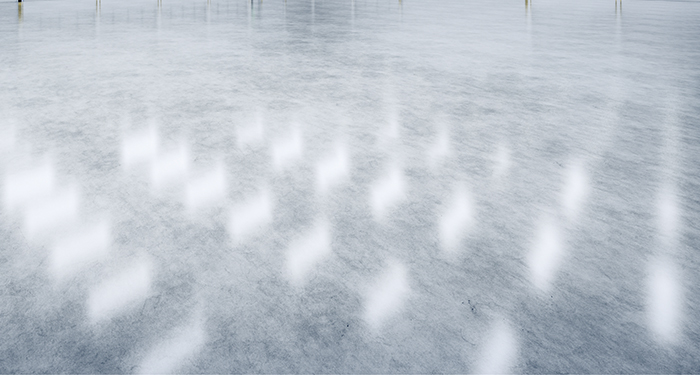
You may feel the need to use less lighting in the room(s) with this type of flooring, and thus this may also save you money on your electricity bills.
Better Slip Resistance (Yes, That’s Right)
You’d be mistaken if you thought that the shiny image of a polished concrete floor meant that it was slippery.
In fact, quite the opposite is true. The nature of polished concrete floors makes them less slippery than regular concrete floors.
Less Dust Gathered
Thanks to the nature of polished concrete floors, dust from efflorescence cannot gather on these floors.
How Much Does It Cost to Remove Polished Concrete Flooring?
You may wish to have a polished concrete floor removed so that you can install another type of flooring or as part of the removal of an entire room so that perhaps your garden could be expanded or another structure could be built in its place, such as a conservatory.
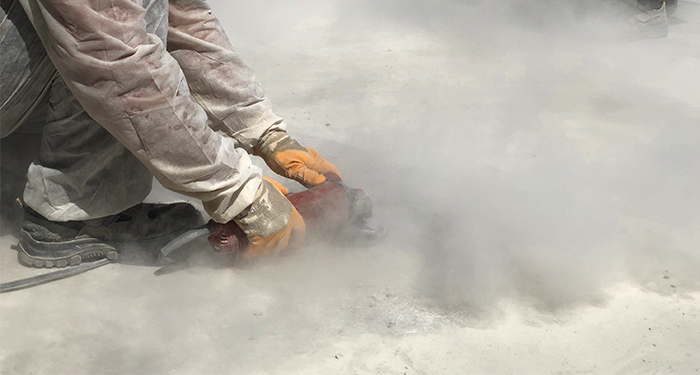
The cost of removing a polished concrete floor will vary greatly, but on average, you’re probably looking at paying about £14 to £18 per hour plus waste removal costs.
It may take a few days, so you’ll likely pay around £500 to £1,000, and this would include the cost of waste removal.
FAQs
Q: How do you clean a polished concrete floor?
A: Broadly speaking, the following steps are needed; Dust mop your floor using a microfiber pad each day, with the mop being wetted and cleaned before each use (clean water is a must too, of course).
If you are wet mopping, it’s important that you employ a neutral floor cleaner and one that has the correct formula needed to suspend particles of dirt for straightforward removal. Notably, you should clean stains and spills as fast as you can.
Beyond that, allow the cleaner sufficient time to break down contaminants like grime before suspending the dirt particles. Should you use a cleaning agent and then mop or vacuum the product up, it will not have received the necessary time to clean the floor.
It’s also key that the solution is not allowed to dry on the polished concrete floor. Ideally, you want to clean small areas and make sure that you do the job correctly at any given section of flooring before proceeding to clean another.
Q: How long does polished concrete flooring last?
A: These floors generally last for two decades before they should begin to look worn down. However, it depends on a range of factors, such as how well you maintain your flooring.
Q: Where can I get polished concrete floor tiles?
A: One handy approach is to Google search ‘polished concrete floor tiles near me’ and then have a look at any good polished concrete floor tiles on sales in your area.
Q: Should I consider getting a polished concrete garage floor?
A: It’s definitely worth considering. It is most commonly used inside homes, but it is a great choice for a concrete garage floor and is worth contemplating.
Q: What are some popular colours of a polished concrete floor?
A: Such examples include gold finish, light grey, dark grey, and really anything in between light and dark grey. However, there are many more options out there, and it really depends on what best suits your home and your own preferences.

